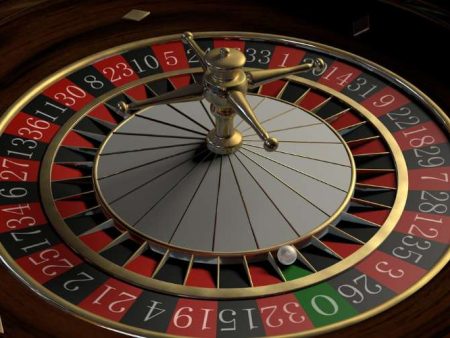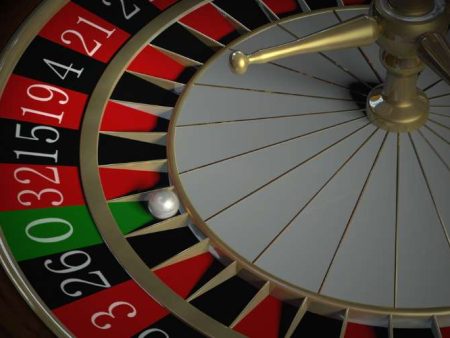
What's on this page
Roulette has long been one of the most exciting and iconic casino games, attracting UK players with its simple yet thrilling gameplay. Whether playing online or in a land-based casino, everyone dreams of finding the best roulette strategy to beat the wheel. One of the most well-known betting systems is the Martingale strategy.
The Martingale system is a European roulette strategy that many players swear by. The concept is simple: double your bet after every loss to recover previous losses and make a profit. But does it really work? In this guide, I’ll take you through how to use the Martingale strategy, its risks, variations, and responsible ways to apply it to your roulette gameplay.
What is the Martingale Strategy?
The Martingale strategy is a progressive bets in roulette system that has been used for centuries. It is based on the idea that if you keep doubling your bet after a loss, eventually, a win will recover all previous losses plus a profit equal to your initial stake.
How the Martingale Strategy Works
- Choose an even-money bet (red/black, odd/even, 1-18/19-36).
- Place your initial bet (e.g., £1 on red).
- If you win, keep the winnings and start again.
- If you lose, double your bet (£2 on red).
- Continue doubling after each loss until you win.
- Once you win, go back to your original bet amount.
Here’s an example of a typical Martingale sequence:
| Bet Number | Bet Amount | Outcome | Cumulative Loss/Profit |
| 1 | £1 | Loss | -£1 |
| 2 | £2 | Loss | -£3 |
| 3 | £4 | Loss | -£7 |
| 4 | £8 | Loss | -£15 |
| 5 | £16 | Win | +£1 |
This system relies on the assumption that a losing streak won’t last forever. But, as we’ll explore, there are significant risks involved.
How to Use the Martingale Strategy in Roulette
If you want to try the Martingale system, follow these key steps:
Choose the Right Roulette Variant
Always opt for European roulette strategy over American roulette. European roulette has a single zero, offering better odds (2.7% house edge) compared to the double-zero American version (5.26% house edge).
Set a Starting Bet
Your initial wager should be small enough to allow multiple doubles in case of a losing streak. Many players start with the table minimum, such as £1 or £2.
Stick to Even-Money Bets
Since the strategy relies on recouping losses, always use it on even-money bets, such as red/black or odd/even.
Set a Bankroll Limit
Before playing, decide on a bankroll cap and never go beyond it. A long losing streak could wipe out your funds quickly.
Be Aware of Table Limits
Most casinos have betting limits that prevent unlimited doubling. If you hit the table limit, you won’t be able to continue the system.
Pros and Cons of the Martingale Strategy
Pros
- Simple to understand and implement.
- Great for short-term wins when luck is on your side.
- Works well with even-money bets.
Cons
- Does not change the house edge.
- Risk of hitting table limits, making recovery impossible.
- Requires a large bankroll to withstand losing streaks.
- Can lead to significant losses if unlucky.
Variations of the Martingale Strategy
If the traditional Martingale system feels too risky, consider these variations:
Grand Martingale
- Instead of doubling, you add an extra unit to each bet.
- Example: If your first bet is £2, the next bet would be £5 instead of £4.
- Offers bigger potential wins but requires an even larger bankroll.
Reverse Martingale (Paroli System)
- You double your bet after a win instead of a loss.
- This lets you take advantage of winning streaks rather than trying to recover losses.
Mini Martingale
- Limits the number of times you double your bet, reducing risk.
- A good option for players who want to minimize big losses.
The Risks and Limitations of the Martingale Strategy
One of the biggest problems with the Martingale system is the assumption that you will eventually win. While that’s true in theory, long losing streaks can wipe out your bankroll before you can recover.
Example of a Losing Streak
Imagine you start with £1, but after just 10 losses in a row, your bet size has grown to £512. The total amount wagered so far would be £1,023—far beyond most casual players’ budgets.
Additionally, table limits prevent infinite doubling. Many roulette tables have a max bet of £500 or £1,000, making it impossible to continue doubling beyond a certain point.
Practical Tips for Using the Martingale Strategy
- Set win/loss limits – Decide in advance when to walk away.
- Play European roulette – It offers better odds than American roulette.
- Use a mini Martingale – Capping the number of doubles reduces risk.
- Manage your bankroll carefully – Never bet money you can’t afford to lose.
Alternatives to the Martingale Strategy
If you find the Martingale system too risky, consider these alternatives:
Flat Betting
- You place the same bet size every round, minimizing risk.
D’Alembert System
- A less aggressive progression where you increase by one unit after a loss instead of doubling.
Fibonacci Betting System
- Uses the Fibonacci sequence to determine bet sizes, reducing exposure to huge losses.
Responsible Gambling and the Martingale Strategy
While the Martingale strategy can be fun, it’s important to gamble responsibly.
- Set a bankroll limit and stick to it.
- Avoid chasing losses—roulette is still a game of luck.
- Take advantage of responsible gambling tools like deposit limits.
- Remember that no strategy can guarantee long-term wins.
Conclusion
The Martingale strategy is one of the most famous progressive bets in roulette systems, but it comes with significant risks. While it can deliver quick wins, a long losing streak can lead to heavy losses.
If you choose to use Martingale, do so responsibly. Set limits, use a European roulette strategy, and always play within your means. With the right approach, roulette can remain an enjoyable and exciting game without unnecessary financial risk!





